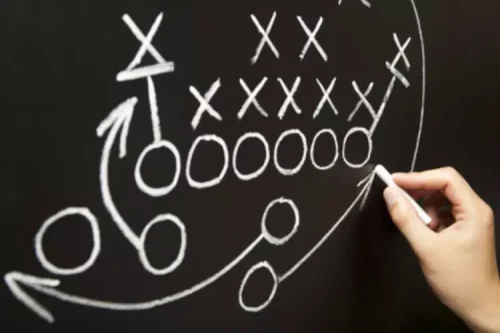
One of the main challenges in providing services for alcohol treatment is to increase the effectiveness of the interventions offered. The concept of tailoring treatments to particular types of clients to increase effectiveness has been appealing to researchers both in terms of its logical plausibility and as a possible explanation for the reason why no one intervention has universal effectiveness. However, despite this, there is limited evidence to date that matching people with alcohol misuse or dependence to treatment approaches demonstrates effectiveness. Services for people who are alcohol dependent and harmful drinkers are commonly delivered by statutory and non-statutory providers. The field is undergoing rapid change across different areas of the country due to the impact of the commissioning process.
Substance Dependence Symptoms
- A psychoeducational intervention involves an interaction between an information provider and service user.
- While AA might not suit all people who misuse alcohol, its advantages include its wide availability and open access.
- All four interventions resulted in lower costs per additional abstinent person and lower costs per death averted in comparison with standard care.
Horizontal lines and shaded area represent brain alcohol levels (means ± SEM) measured in the dependent mice during chronic intermittent alcohol exposure (28.4 ± 3.5 mM). In addition to physical signs of withdrawal, a constellation of symptoms contributing to a state of distress and psychological discomfort constitute a significant component of the withdrawal syndrome (Anton and Becker 1995; Roelofs 1985; Schuckit et al. 1998). These symptoms include emotional changes such as irritability, agitation, anxiety, and dysphoria, as well as sleep disturbances, a sense of inability to experience pleasure (i.e., anhedonia), and frequent complaints about “achiness,” which possibly may reflect a reduced threshold for pain sensitivity. Many of these signs and symptoms, including those that reflect a negative-affect state (e.g., anxiety, distress, and anhedonia) also have been demonstrated in animal studies involving various models of dependence (Becker 2000). Substance dependence and substance abuse used to be classified as separate health conditions in the Diagnostic and Statistical Manual of Mental Disorders (DSM), which is the guiding manual for diagnosing mental health conditions. However, the latest edition, DSM-5, has included both conditions under the umbrella term of substance use disorder.

How alcoholism can be mistaken for Alzheimer’s
This includes the need for specialist treatment services to assess the impact of the individual’s drinking on family members and the need to ensure the safety of children living with people who misuse alcohol. Often, people who are alcohol dependent (particularly in the immediate post-withdrawal period) find it difficult to cope with typical life challenges such as managing their finances or dealing with relationships. They will therefore require additional support directed at these areas of social functioning. Specific social problems such as homelessness, isolation, marital breakdown, child care issues including parenting problems, child abuse and neglect will require referral to, and liaison with, appropriate social care services (National Treatment Agency for Substance Misuse, 2006). A proportion of service users entering specialist treatment are involved with the criminal justice system and some may be entering treatment as a condition of a court order.
25.2. Studies considered for review
Data on alcohol-related attendances at accident and emergency departments are not routinely collected nationally in England. However, a 24-hour weekend survey of 36 accident and emergency departments found that 40% of attendances were alcohol related and at peak times (midnight to 5 a.m. at weekends) this rises to 70% (Drummond et al., 2005). Harmful and dependent drinkers are much more likely to be frequent accident and emergency department attenders, attending on average five times per annum. Between 20 and 30% of medical admissions, and one physiological dependence on alcohol third of primary care attendances, are alcohol related (Coulton et al., 2006; Kouimtsidis et al., 2003; Royal College of Physicians, 2001). Further, people who are alcohol dependent are twice as likely as moderate drinkers to visit their general practitioner (GP) (Fuller et al., 2009). Community reinforcement and family training is a manualised treatment programme that includes training in domestic violence precautions, motivational strategies, positive reinforcement training for carers and their significant other, and communication training.
10.2. Clinical review protocol (behavioural therapies)
These studies have resulted in the identification of alcohol reward brain systems (Makris et al. 2008) (see figure 6). Brain regions commonly invoked in rewarding conditions are the nucleus https://ecosoberhouse.com/article/alcohol-neuropathy-symptoms-and-treatment/ accumbens and ventral tegmental area. As a point of translation, these brain regions identified in humans also are implicated in animal models of alcohol dependence and craving (Koob 2009).

11.2. Clinical review protocol (contingency management)
- Based on the age-related physiological changes in the way people respond to alcohol, some experts believe the criteria should be changed for older adults—perhaps limiting intake to no more than one drink per day after age 65.
- Six RCT trials relating to clinical evidence met the eligibility criteria set by the GDG, providing data on 527 participants.
- Little explanation was given in the article as to how the clinical effectiveness data, which were taken from various sources, were used to inform the health states used in the economic models.
- To report their SSB consumption, students were presented with visual cues on how many cups are contained in typical packaging sizes of beverages and asked to how many cups they consume in a typical week (Supplementary Table 1).
- Recognizing the complexity of visuospatial processing, later studies employed new paradigms to parse its components.
- However, ‘alcohol dependence’ and ‘harmful alcohol use’ are used throughout this guideline to be consistent with WHO’s International Classification of Mental Disorders, 10th Revision (WHO, 1992).
